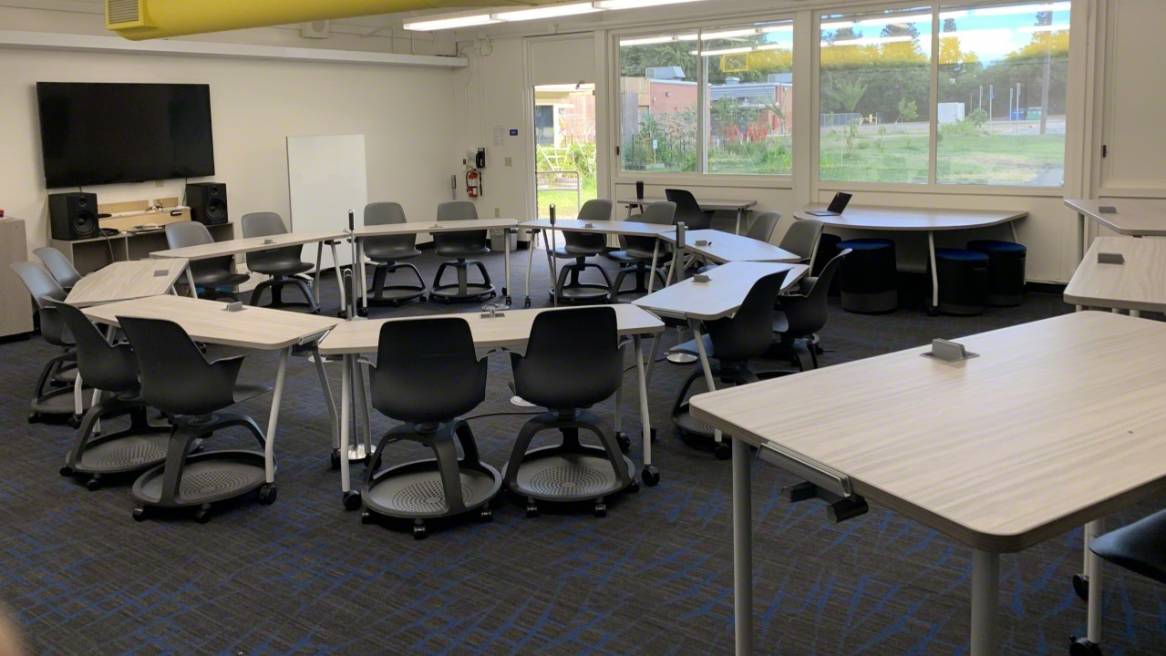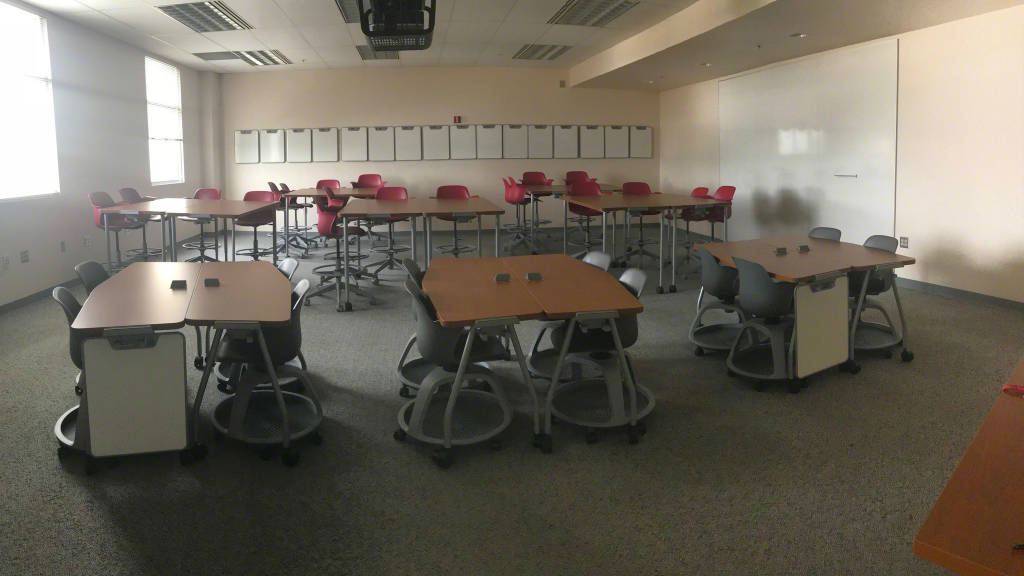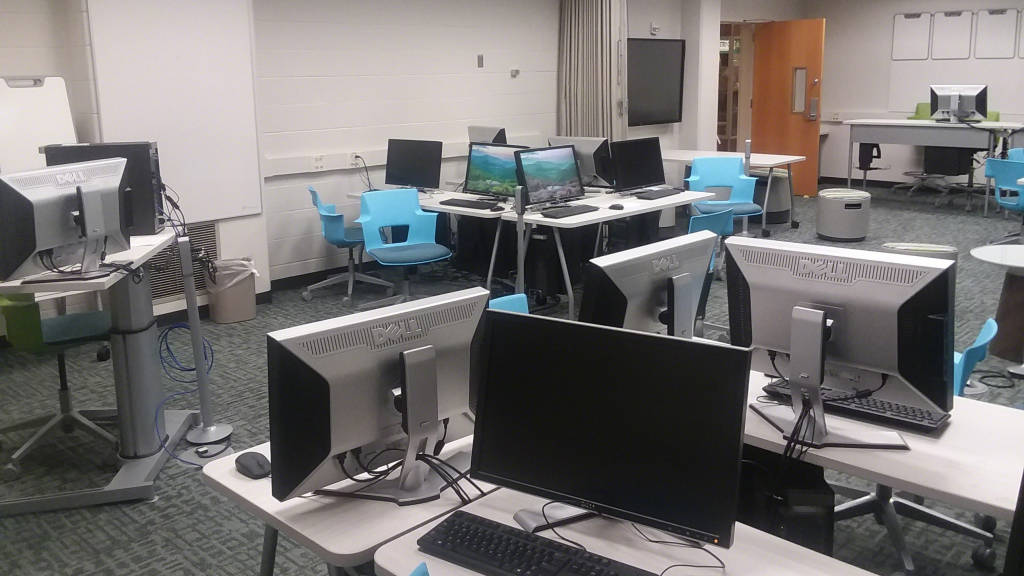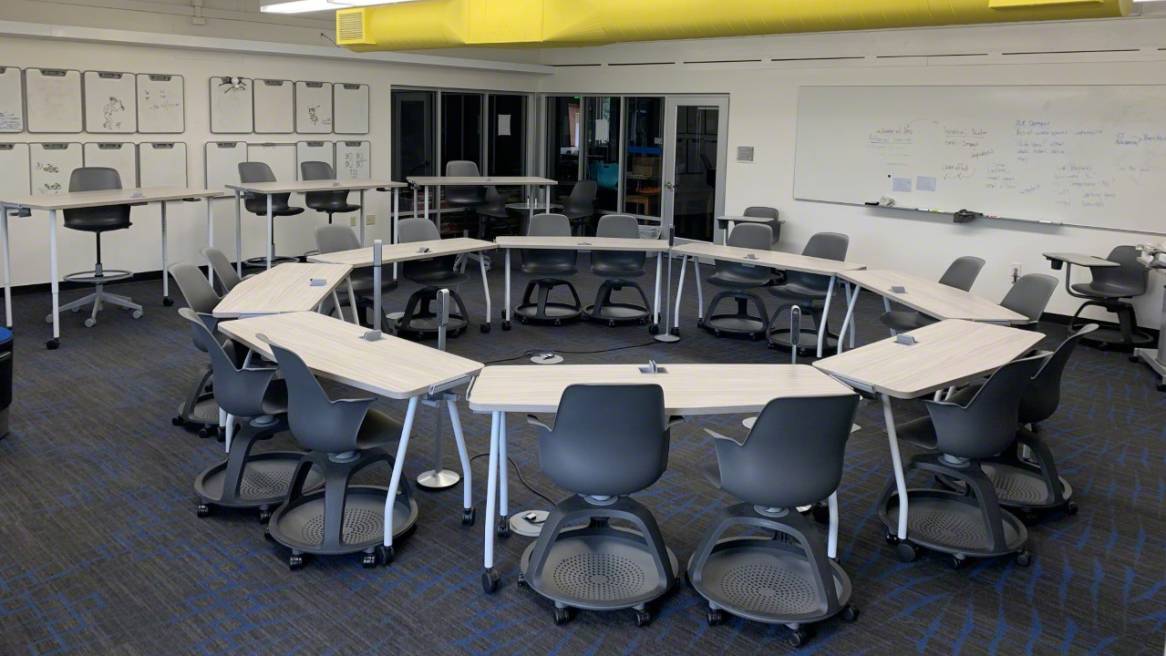Classroom Makeover: Part II
Active Learning Center Grant recipients study how their new space impacted educators and students in the first year.
In the fall, 360 spoke to recipients of the Steelcase Education Active Learning Grant as they began their first school year in their new Active Learning Center (ALC).
The grant, which was established to help institutions create effective, inspiring learning environments, provides up to 16 recipients each year with the furniture, tools and technology to support a more hands-on approach to learning.
With the school year complete, we wanted to check in with our friends at the UnSchool, New Mexico State University and Virginia Tech to hear how things went for the faculty and the students and what they hope for next year.
INTERESTED IN THE ACTIVE LEARNING CENTER GRANT?
Browse resources, sign up for updates and learn more about the program’s next grant.
UnSchool | Fair Oaks, CA

The UnSchool was designed to be a more open environment for students who struggled in a traditional classroom setting. And while students were encouraged to work in groups and interact with their peers, the clunky, heavy furniture couldn’t keep up, causing students to stay siloed.
In their new ALC, the UnSchool students are always on the move.
“Many students have taken the lead in designing new classroom configurations since they can move the furniture with ease,” says Principal Gabriel Cooper. “Teachers have found the space to be very functional and the furniture to be well-constructed and durable. One even commented it still looks brand new, after a year.”
Filled with comfortable, stylish pieces that are inviting and easy to move, the ALC has become the most popular place in school. “Whether the space is used for meetings, testing, presentations or group activities, the furniture allows the space to be adapted and configured in different ways to support users,” says Cooper.
How did the new space impact the students’ progress?
For Cooper, the most surprising takeaway this year was how much students and teachers genuinely liked being in the space. “The ALC creates a vibrant and flexible space for students to conduct their learning. Students and teachers seek out the environment and want to find new, constructive ways to use the space,” says Cooper. “They enjoy moving the furniture into new configurations that support their individual learning styles. The speed at which each configuration can be switched allows for seamless transitions between activities.”
So, what’s next for the UnSchool’s Active Learning Center?
“We plan to continue to explore new configurations with the furniture. We also want to see how the ALC can support students and teachers with their own personal learning goals. Next year will be our first with a senior class. As part of their leadership development, we’ll be putting them in charge of running lessons for their peers. Designing the furniture layout will be a big part of that,” says Cooper.
New Mexico State University | Las Cruces, NM

New Mexico State University recently revamped its Engineering 100 course to have more team-focused work and group design challenges in an effort to increase retention. Faculty decided it was the perfect course to offer in their new ALC.
“It’s been really, really great,” says Elizabeth Howard, program manager of student affairs for the NMSU College of Engineering. “Students prefer the ALC to any other classroom because it allows them to work better and more easily in teams. And a lot of our teachers have been begging to use it.”
Howard says the room allows teachers to easily move around, reaching everyone in the class more easily, which pulls secluded students out of their shells. “It really enhances teamwork and allows it to happen very naturally. It prevents students from working in silos, and forces the ones who’d normally sit in the back to engage because there’s no longer a back of the classroom,” she adds.
This group of students has been the most engaged group of students I’ve seen since I started teaching this course in 2012.
Howard received positive feedback from students and faculty alike.“This group of students has been the most engaged group of students I’ve seen since I started teaching this course in 2012. The room empowers them to engage with the problems being presented in class and easily share with their peers. It allows me to engage them in different ways rather than just standing in front of the room. I can go to the different break-out tables or different whiteboards in the room, or give them direct feedback on their individual whiteboards,” says one associate professor.
Because of the overwhelming response to the new space, the faculty was able to use alumni funding to create a second ALC in January, and are getting a third one this summer.
“It’s a very popular place on campus. One ALC has secured funding for more rooms. Alumni have seen what a positive impact the space has had on our students. And, teachers from other departments are going to apply for the grant next year,” Howard says.
Virginia Tech | Blacksburg, VA

With the help of the Active Learning Center Grant, the faculty at Virginia Tech was able to upgrade a 20-year-old computer lab into a modern, living laboratory that could support the hands-on work their curriculum now requires.
“The students are more comfortable in the space. First, they’re physically comfortable because the seating is more plush than what was there before. But, they’re also more relaxed to just come in and use the facility to do general work at any time. They’re using couches, tables and extra chairs for group work outside of class, ” says Les Fuller, Senior Research Associate at Virginia Tech.
Fuller says faculty members feel more connected to their students during class. “They like the ability to move through the room as they’re teaching and use the portable whiteboards to connect with students.”
Looking to the next school year, Fuller’s team will continue to monitor student interaction in the ALC and in a traditional computer lab. They also plan to implement more TV monitors and upgrade the ability to display on those monitors from computers and mobile devices in the room.
So, what was most surprising to Fuller about the space?
“How quickly the students have gravitated towards the space. You can tell how much they enjoy being in the room, whether it’s just to hang out or work together on projects,” he says.
INTERESTED IN THE ACTIVE LEARNING CENTER GRANT?
Browse resources, sign up for updates and learn more about the program’s next grant.


